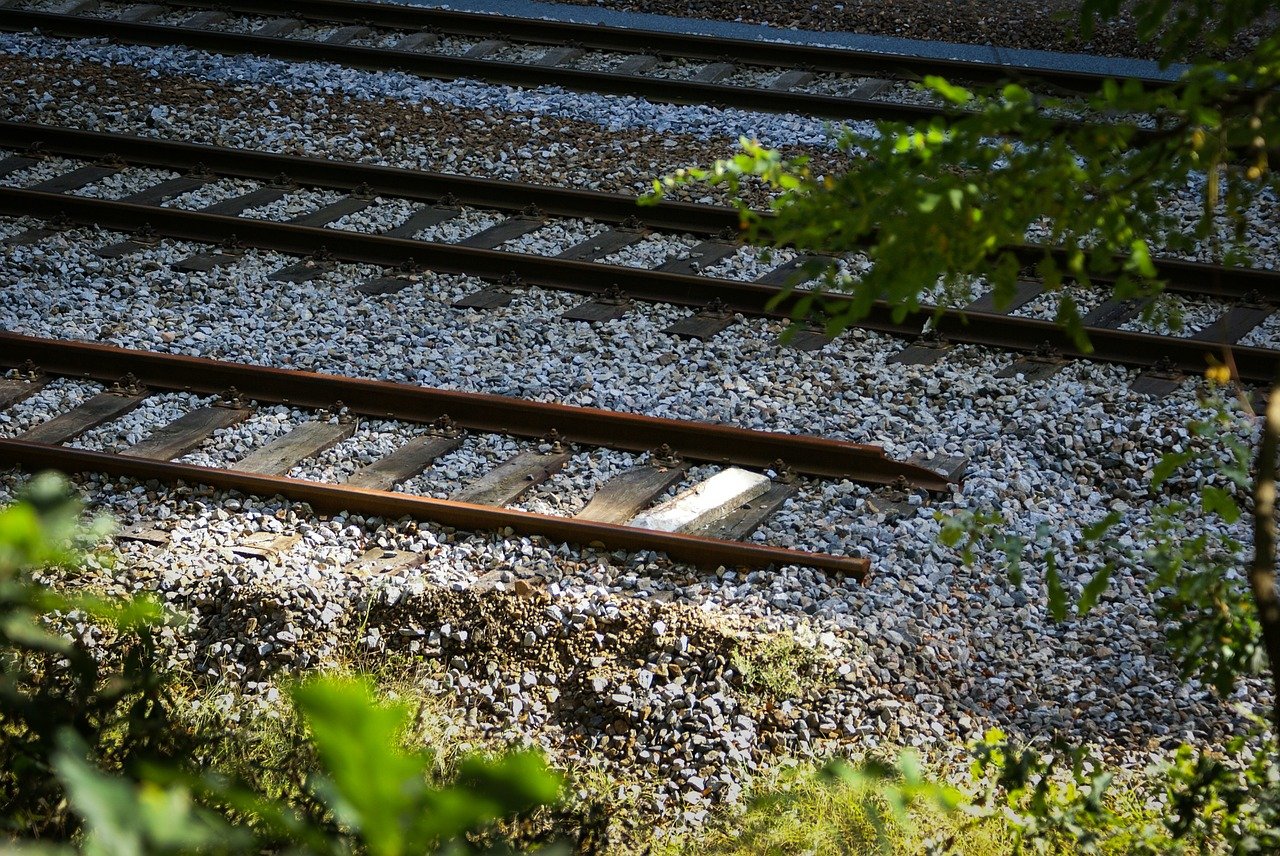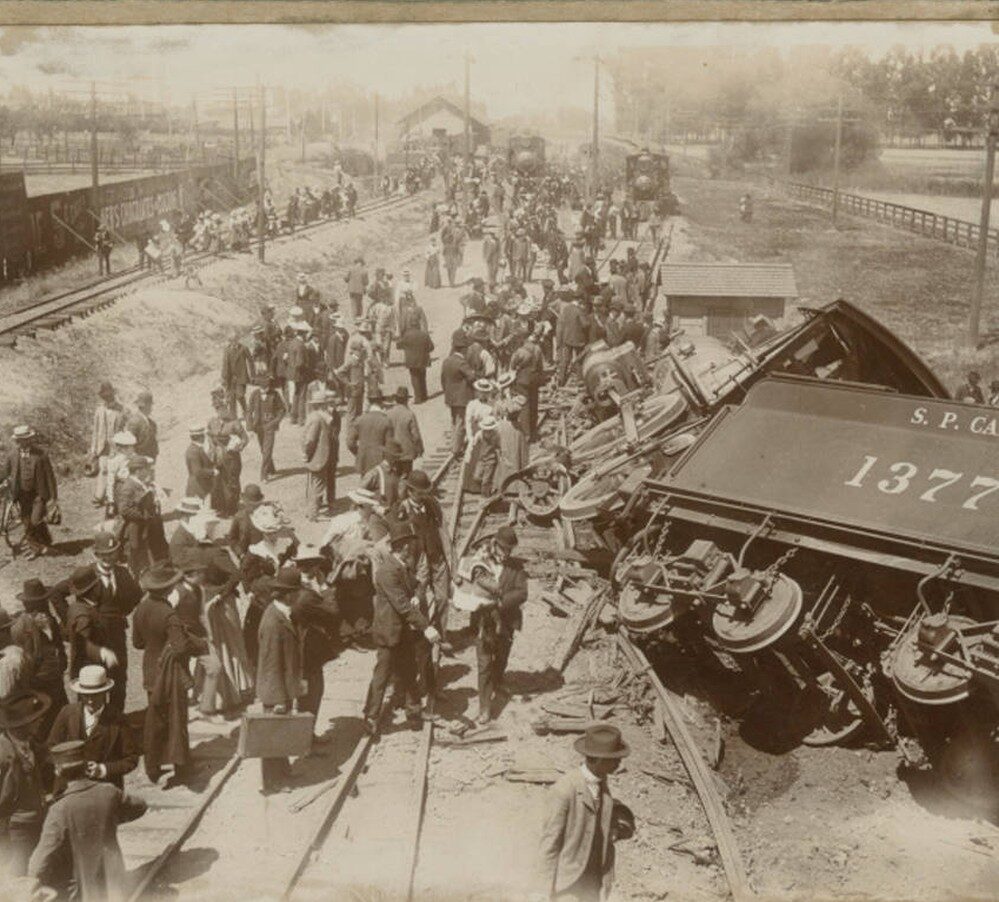Introduction:
Transportation today cannot be conceived without the rail industry because it transports freight and people over extensive networks. Among the many key factors involved in keeping a safe and reliable rail system, one very important aspect is track integrity. The most interesting and least talked about problem remains “tie plate slip derailment,” a problem yet to receive significant attention in the rail industry but is still as vital because if proper care is not taken, the derailment of trains might become very serious.
In this post, we will learn what tie plates are, how they work in the railroad and how derailment by slip can take place, prevention measures as well as implications on derailment.
What is a Tie Plate?
A tie plate slip derailment or a base plate, is the steel plate located in between the rail and the wood or concrete ties also termed as sleepers. They help transfer the load between the rail and the tie, along with maintaining it in a proper alignment. They help the track and hold the rail firmly in place in position, thereby keeping the excess wear off on both ties and rails.
Components of a Tie Plate:
Tie plates have holes or slots through which spikes or screws are driven to affix the rail to the tie. It also accommodates a rail seat. The loads passed from the rail to the tie are transferred by the tie plate. This will negate lateral movement of the rail and ensure constant gauge width in between the rails.
Tie Plates Importance:
Tie plates are essential in distributing the weight of the train to avoid rail from cutting into the ties and the minimization of track movement under load. The proper installation and maintenance of the tie plates are very crucial in having a stable rail system that is safe.
How Does Tie Plate Slip Happen?
Tie plate slip refers to the slippage of the tie plate or it moves out of position underneath the rail.
Wear and tear:
The constant tension and vibration of trains as well as environmental factors, which include temperature fluctuations, result in the loosening or displacement of tie plates through gradual erosion.
Lateral Forces Lateral forces are the external influences by trains while trying to turn on the railways. Lateral forces affect rails slightly causing minute changes of tie plates if properly restrained.
Poor track alignment, lumpy or worn ballast (the crushed rock under the ties), and misaligned rail cant can all contribute to the gradual movement of tie plates over time.
Wooden Tie Degradation:
Wooden ties are susceptible to rot and decay that compromises the integrity of the structure. Once the tie itself degrades, it will not keep the spikes or screws fastened in place, so the tie plate will move.
Tie plate slip derailment:
This type of derailment occurs due to the lateral displacement of a tie plate causing stress and misalignment of rails, thus raising the prospect of derailment. A derailment of this sort can be gradual because of accumulation of small displacements in a span of time or may be sudden because of stress on the track. In case of a derailment caused by tie plate slip, the derailment
Follows this process:
Gauge Widening:
Rail slippage on tie plate can lead to gauge increase, and once the increase crosses acceptable limits, train wheels cannot sit properly on to the rail leading to derailment.
Failure in rail cant:
So, if the tie plate moves, the rail will move too much to one side and the train probably cannot run steadily on the tracks, especially in high-speed or curved parts of the track.
Track misalignment
Tie plates sliding along a track section may eventually cause general track misalignment. Trains running on misaligned tracks experience uneven loading, and the possibility of derailment increases.
Actual Cases of Tie Plate Slip Derailment
One such example is the Graniteville, South Carolina, derailment in 2005, where significant damage was caused, and hazardous chemicals were released. In this instance, research evidence indicated that derailment had resulted because of the improper alignment of track resulting from the movement of the tie plates.
Effects of Tie Plate Slip Derailment
The effects of tie plate slip derailment are catastrophic. They may involve severe costs in terms of loss of life and finances. Among them are:
Loss of Life and Injuries:
Derailments by track failures, which also include tie plate slippage, may cause casualties and injuries. Such an event may occur especially if a derailment is associated with passenger trains or dangerous commodities.
Property Damage:
Derailments are more destructive to the train as well as track infrastructure with extensive damage in nearby properties. The repairing costs become significantly high and, of course, the days or sometimes even weeks’ network shut-down by such incidents.
Environmental Impact:
Where there is derailment from carrying hazardous material, environmental consequences include spillage of liquids, fire breakout and subsequent contamination of surrounding waterways and land-based ecosystems leading to long term ecological as well as expensive cleaning.
Financial Losses:
Some financial lose may affects individual, companies, and even nation through, disasters, planning and organization breakdown, and shifts in market trends. In the case of a firm, losses can be from reduced sales revenue or increased operating expenses, threat of competition, among others making the profit margin shrink and internal resources stretched.
People lose their employment, businesses experience lower revenue and profits, or have unscheduled expenditures which put them in adverse precarious positions financially. On a larger scale, recession, natural calamities, political unrest or crisis leads to lot of losses in businesses thus affecting trading, employment and overall economic development. Combating these losses requires anticipating events and planning for how to safeguard the assets and ensure that an organization has the financial capacity to do so.
Preventive Measure Avoiding Tie Plate
Railway companies should emphasize scheduled maintenance and inspection to avert tie plate slip derailment. Some of the primary preventive measures include
Routine Track Inspections:
As evidenced by experience and practice, ultrasonic testing and automated track geometry systems are some of the high-tech that can unveil apparent defects. To avoid such incidents, enhance the standards of safety and general performance, railway companies ensure regular inspection of tracks and thereby extend the lives of rail infrastructure; therefore, railways provide efficient service provision for freight and passengers.
Track Maintenance and Repair:
In turn, the RRTs inspect for wear and probable issues such as rail cracks, misaligned tracks or weak fastenings, which hazard if unchecked. Some good drainage renewal to worn rails and realignments should be in place. Another important factor is that a bit of repair, such as replacing joints or broken rivets after overuse or damage. In this way, railways ensure less derailment, good comfort for rides, and uninterrupted service for passengers and goods alike.
Advanced Quality Materials
Many rail operators have also transitioned to concrete ties, which have better resistance than wooden ties and would not rot. Newer fastening systems, like the elastic fasteners, allow for longer durability with prevention of tie plate slippage.
Advanced Designs in Tie Plates
Modern tie plates are made with features that enhance their stability and resistance to movement. These features include better spike retention systems and tie plates with a larger surface area to spread loads evenly.
Ballast Maintenance
Ballast maintenance is essential to the stability of a track. Good ballast provides stable support under the ties and distributes passing train lateral forces evenly. Poor conditions may aggravate tie plate slippage, and therefore, there is a need for routine ballast tamping and renewal.
Technological Advancements
Over the past two decades, developments in technology have provided railway operators with an arsenal of advanced tools that help them detect and prevent potential track failure, including slip derailments due to tie plate derailment.

Promising ones include:
Automated Track Inspection Vehicles:
The following are fitted with sensors and cameras that can detect the movement of tie plates, trace misalignment issues, among others defects during traveling along the track. This will facilitate more prompt and accurate defect identification compared to manual checks.
Trackside Monitoring Systems
Some rail networks have installed permanently monitoring systems that can detect the condition of the rails and the ties in real time. Using sensors, the monitoring systems are capable of detecting movement or any change in the track to alert operators early enough in case an issue arises before causing derailment.
Conclusion:
Tie plate slip derailments are not much discussed, but they still remain a threat to rail safety. Railway operators, engineers, and safety officials should understand what causes tie plate slip, its derailment potential, and methods available to prevent it. From routine maintenance and inspections to new materials and technologies, preventive measures must be taken to prevent the risk of derailment that comes with tie plate slip. With all vigilance and investments in track integrity, the rail industry continues to provide safe, efficient, and reliable transportation of goods and passengers.







